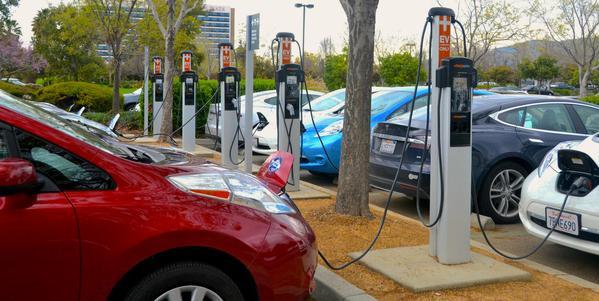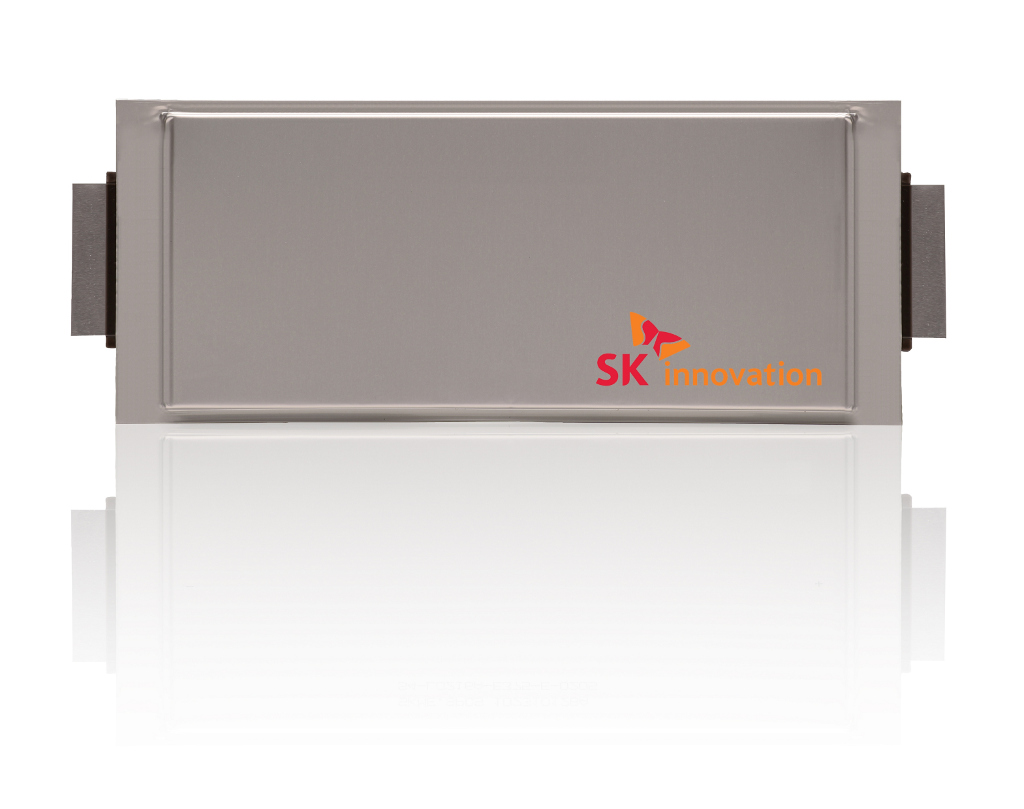Source: Paul Eisenstein
The interior of the Byton M-Byte features a 48-inch video screen.
A Chinese startup that's vying for Tesla's customers unveiled Sunday a 48-inch-wide video screen that stretches across the top of the dashboard of the Byton M-byte battery-electric vehicle.
The video screen, the size of seven iPads across, will anchor a business model that focuses as much on selling “content” as cars, CEO Carsten Breitfeld told CNBC.com. The SUV offers an optional 95-kilowatt-hour battery that can travel as far as 325 miles between charges.
The Chinese start-up staged one of the lead-off events for the annual Consumer Electronics Show — now known as CES — in Las Vegas. Fittingly, Byton's hour-long news conference focused on the connected technologies that will be built into its first product, the M-byte sport-utility vehicle set to go into production “before the end of the year,” said Breitfeld. That includes not only the massive screen atop the instrument panel but another that will float atop the steering wheel, allowing a driver to operate virtually all vehicle functions.
Tesla and Elon Musk break ground on new China factory
3 Hours Ago | 01:18
The M-byte will target a variety of established automakers moving into the battery-car space, including Audi, BMW and Mercedes-Benz, as well as Tesla, now the sales leader in the electric vehicle market. At a starting price of $45,000, it will come in at around the same price as the least expensive Tesla Model 3 currently on the market.
The base car will include a 71 kWh lithium-ion battery capable of around 250 miles range. A fully loaded version, Breitfeld added, will push into the $60,000 range will include the longer-range, 95 kWh battery. It will also feature all-wheel-drive, rather than the rear-wheel-drive system in the base model. And it will be offered with optional Level 3 autonomous driving capabilities. That will permit the vehicle to operate largely hands-free on highways, though the driver will need to be ready to take retake control in an emergency.
Both versions will come equipped with the 48-inch screen, the floating touchscreen atop the steering wheel and a third touch-enabled pad atop the center console that can be operated by a passenger. The vehicle will also allow a motorist to operate its various digital functions by voice or by using gestures, similar to technology found in several new BMW models.
Source: Paul Eisenstein
Dr. Carsten Breitfeld,, Byton CEO on stage at CES
The CES event focused primarily on the digital technology going into the new M-byte, an extensive array of features that the company has dubbed “Byton Life,” something meant to “transform those four wheels into the next-generation smart device.” Breitfeld declared. “M-byte could become the most important digital device in your life.”
The system relies on the latest in digital microprocessing technology operating both artificial intelligence and machine learning software, added Daniel Kirchert, Byton's co-founder and president. And it will link to the world through the new 5G wireless network just starting to go into place in the U.S., China and Europe.
Byton has also partnered with Amazon and will integrate the U.S. firm's Alexa voice assistant into the battery-SUV. That will allow passengers to plug in destinations, change audio sources and remotely operate smart home systems – turning on their lights at home while driving home at the end of the day, for example. But Byton hopes to also sell videos, games and other content that can be displayed on screens throughout the vehicle, including twin LCD displays for rear seat occupants.
“Our business model will not just be about selling cars, but using the car as a platform,” Breitfeld said in an impromptu interview following the CES news conference. “In the future, we will make more money selling digital content and shared mobility.”
The CEO believes in one of the big transformations many experts anticipate will sweep through the transportation industry over the next decade. A study released a year ago by the Boston Consulting Group forecast 30 percent of the miles that Americans clock on the road each year will be in self-driving vehicles operated by ride-sharing services. Breitfeld said he thinks that could come closer to 50 percent.
Byton, he added, plans to set up its own ride- and vehicle-sharing operations, rather than just selling its vehicles to existing services like Uber, Lyft or Waymo. The latter, a spin-off of Google, last month launched the world's first commercial self-driving ride-sharing program in Phoenix. Byton isn't the only automaker exploring that option. General Motors has said it plans to launch a similar service this year through its Cruise Automation subsidiary. Volkswagen and Ford have outlined similar plans.
Backed by the Nanjing government, as well as First Auto Works, or FAW, one of China's largest homegrown auto companies, Byton is one of a growing list of Chinese-funded electric vehicle start-ups. It's finalizing work on a plant in Nanjing that will be able to produce up to around 300,000 vehicles annually, Breitfeld told his CES audience. He subsequently told CNBC that the plan is to sell about half of those vehicles in China, and about a third, or 100,000 annually, in the U.S. The rest will go to Europe.
Source: Paul Eisenstein
Concept version of Byton M-Byte, set to be 1st vehicle to go into production in China this year.
The M-byte will be its first model, a move that reflects the growing dominance of SUVs in the global automotive market. Sales are expected to begin in China by the fourth quarter of this year and the company will open its first showroom in Shanghai on Jan. 17. The M-byte is expected to go on sale in the U.S. and Europe in the third quarter of 2020.
The concept version of the electric SUV on display in Las Vegas is about 80 percent accurate when compared to the final production model, said Benoit Jacob, the carmaker's vice president of design and the former head of BMW i, the German automaker's electric sub-brand. The most notable difference will come with the addition of conventional sideview mirrors replacing the camera system on the concept.
That's not unusual, automakers typically try to push the envelope on a prototype, then tame back their production designs. But, “I challenged the team to make the production car even better than the show car,” Jacob said during the news conference.
Cramer: New Tesla factory in Shanghai will work out
53 Mins Ago | 01:29
Byton unveiled a concept version of its second model, the K-byte, at the Los Angeles Auto Show five weeks ago. The sedan will feature the same electric drivetrain and digital electronics technology as the M-byte. It is set to go into production by 2021, with a third model on tap for two years later. Byton officials would not discuss plans for that product.
The use of such a massive video display generated plenty of buzz at the tech-focused CES, but also raised questions about whether it might distract the driver — something CEO Breitfeld discounted.
For his part, David Trippany, the associate director of supply chain and technology at IHS Markit, said the bigger question is why. “Right now, it doesn't seem like there's a user justification to have so much real estate (devoted to) the screen.”
Byton officials said they designed the M-byte to be “future proof,” anticipating they will find reasons to have that screen covering the entire instrument panel. But Trippany said the future could see very different technologies replace conventional screens. “Everything could go AR (augmented reality)” over the life of the M-byte, making the system obsolete.
Source: Paul Eisenstein
Concept version of Byton M-Byte, set to be 1st vehicle to go into production in China this year.


